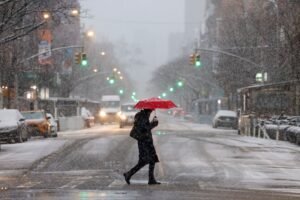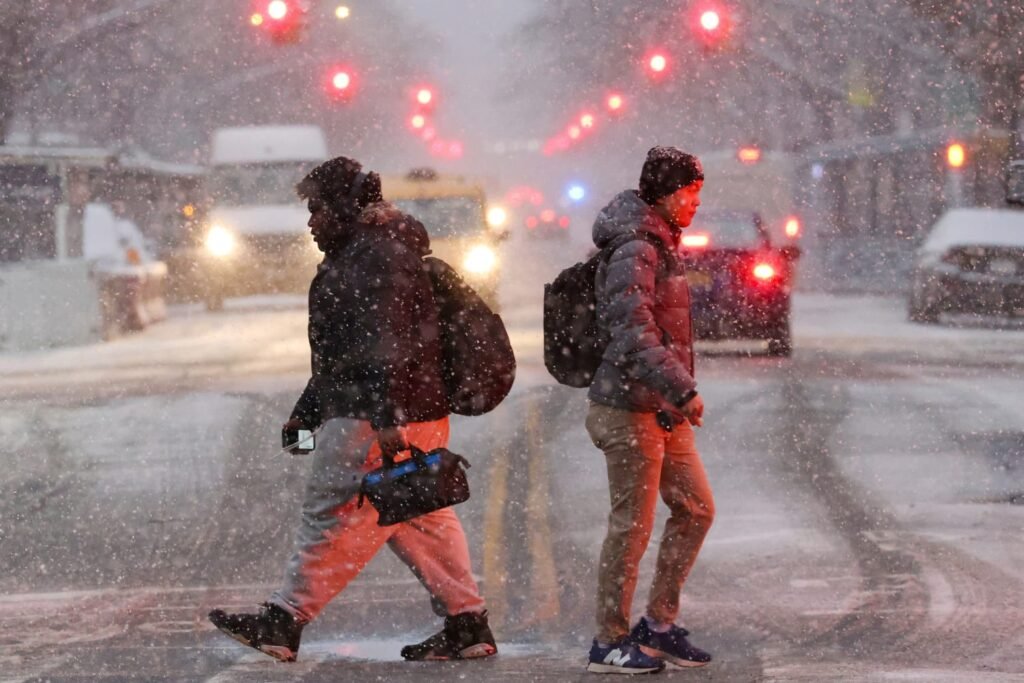Understanding Snow Storms: What Causes Them?
The phenomenon of snow storms results from a convergence of various meteorological conditions, particularly in regions like New York City. At the core of these winter storms lies the interplay between cold air masses and moisture-laden warm air. When frigid air infiltrates the atmosphere, it creates the perfect environment for snow formation, as the cold air stabilizes, allowing moisture to condense and eventually precipitate in the form of snowflakes.
One of the primary factors influencing the creation of snow storms is atmospheric pressure systems. Low-pressure systems are typically responsible for the genesis of winter storms. As warm, moist air from the south ascends and meets cold air from the north, it creates a cycle of rising air that generates clouds. These clouds, when saturated with moisture, can lead to significant snowfall as they drift towards metropolitan areas. The interaction between different air masses is crucial, as it determines the storm’s intensity and the amount of snowfall expected.
Current Weather Patterns in NYC: Analyzing Forecast Data
As winter approaches, New York City’s weather patterns become increasingly significant, particularly as forecasts of snow storms surface. Meteorologists employ a variety of data sources to gauge what residents can expect in terms of temperature trends, precipitation chances, and wind patterns. Analyzing this data is crucial for understanding the anticipated snow storm weather forecast in NYC.
Currently, temperature trends indicate a drop in degrees as the city transitions from autumn. The average temperatures are expected to decline, often dipping below freezing during the late evenings and early mornings. This temperature drop creates conditions conducive to snow accumulation, especially when coupled with increased humidity levels. The forecast data suggests that following these temperature fluctuations, temperatures will remain relatively low, allowing any precipitation to potentially fall as snow rather than rain.
Precipitation forecasts detail the likelihood of snowfall and are crucial for residents planning their winter activities. High-pressure systems and low-pressure systems interact over the region, establishing an environment where significant snow could occur. Current models suggest that there is an enhanced chance for accumulating snow, particularly during late-night and early-morning hours when temperatures are at their lowest.
Wind patterns also play a critical role in shaping snow storms. These patterns can determine how quickly snow falls and whether it is light and fluffy or heavier and more challenging to manage. Stronger wind gusts can lead to drifting snow, compounding the effects of the storm. Monitoring reliable meteorological sources is essential, as they continuously update weather forecasts based on evolving conditions. Understanding these complex interactions aids residents in interpreting the snow storm weather forecast for NYC and helps them prepare accordingly.
Preparing for a Snow Storm: Tips and Safety Measures
As winter approaches, it is essential for New York City residents to be adequately prepared for the inevitable snow storm weather forecast NYC will bring. Adequate preparation can significantly minimize risks associated with severe winter weather. First, create an emergency supply kit. This kit should include items such as non-perishable food, bottled water, flashlights, batteries, a first aid kit, and necessary prescription medications. Keeping a battery-operated radio can also help you stay informed about updates on the weather and emergency announcements.

Travel plans during a snow storm require careful consideration. It is advisable to avoid unnecessary travel when a snow storm is predicted. If travel is necessary, ensure your vehicle is well maintained, and equipped with winter tires and emergency supplies, such as blankets, snacks, and a shovel. Furthermore, informing someone of your travel route and expected arrival time can aid in your safety if unforeseen circumstances arise during your journey.
While indoor preparation is crucial, outdoor safety should not be overlooked. Property owners should take steps to protect their homes by ensuring that gutters are cleared and any outdoor furniture is secured or stored away. Special attention should also be given to snow removal tools. Investing in a sturdy snow shovel and ice melt supplies can aid in effectively managing snow accumulation and icy conditions in your surroundings.
Safety on the roads cannot be emphasized enough during a snow storm. Drivers should increase following distances, reduce speed, and avoid sudden stops or sharp turns. Using public transportation whenever possible can alleviate the number of vehicles on the road, thus decreasing the chances of accidents. Staying informed about the snow storm weather forecast NYC is essential to making informed decisions throughout the duration of the storm.
Post-Storm Impact: What Happens After the Snow Falls?
Following the passage of a snowstorm, the aftermath can significantly impact daily life in New York City. One of the primary concerns is the snow cleanup efforts initiated by city services. Snowplows, installed with heavy-duty equipment, mobilize quickly to clear main roads and thoroughfares while ensuring accessibility for emergency services. These operations typically prioritize routes based on their importance, gradually moving onto secondary streets and residential areas as conditions improve. The efficiency of these cleanup efforts directly influences the city’s ability to resume normalcy.
Transportation systems are another crucial area affected by snow storms. Public transit, often the backbone of urban mobility in NYC, often faces disruptions following heavy snowfall due to reduced service availability and safety concerns. Subways and buses may experience delays or altered routes, leading to challenges for commuters. Moreover, private transport can be hindered as drivers navigate icy and snow-covered roads, necessitating heightened awareness and caution.
The accumulation of snow can also impact infrastructure, leading to potential hazards such as falling tree limbs, ice damming, and blocked drainage systems. Additionally, issues with utilities may arise if snow impacts power lines, highlighting the importance of prompt response from utility companies. School closures often result from severe weather conditions as educational institutions evaluate safety protocols for students and staff. Businesses, too, may experience interruptions, losing revenue during snowy days or needing to adapt to changing consumer patterns during winter months.
Community responses are crucial in the aftermath of snow storms, ranging from volunteer-based efforts to assist vulnerable populations to increased engagement in neighborhood clean-up initiatives. These responses underscore urban resilience, emphasizing the necessity for preparedness in facing extreme winter conditions. Regular training and community planning can help ensure that residents and city services are prepared to handle the repercussions of the next snow storm weather forecast NYC presents.


